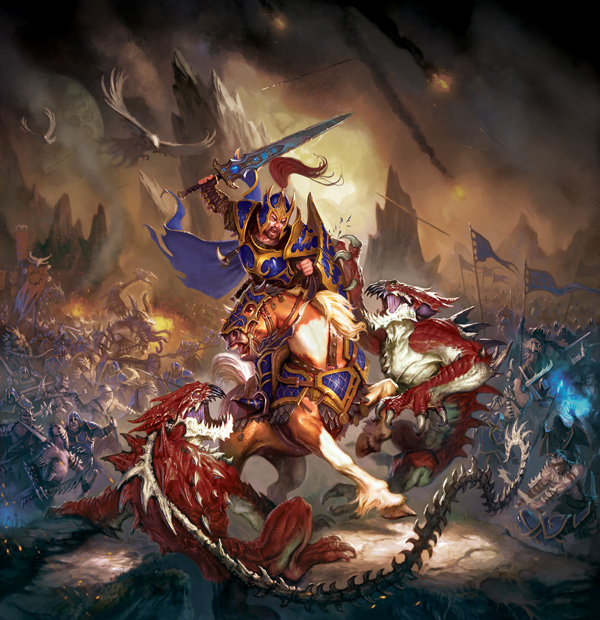
Lady Luck Is a Carnivore
Chris Tannhauser Writes on Planning Ahead in BattleLore Second Edition

We’re all made of meat, Deren thought as he sat on his horse, across from the wild host of warriors and demons. The rising sun lanced between mountain peaks, and from where he sat, he could see something horrible rising unsteadily in the enemy’s camp. The horses around him shied and stamped as riders faked their courage. Deren’s mind turned briefly to their new Lord Commander. Did he even have a plan? A real plan? Last time they trusted luck and Deren was still picking scabs and rubbing scars…
BattleLore Second Edition casts you into the role of general of a fantasy army in Terrinoth, leading either the brutal Uthuk Y’llan or the noble Daqan Lords. No matter which side you play, if you don’t have a plan, your army won’t last much longer. Today, Chris Tannhauser explores the necessity of planning ahead in every game of BattleLore.

Chris Tannhauser on Planning Your Strategy
On a superficial level, strategy in BattleLore Second Edition seems like it can be reduced to luck of the draw. If that’s true, though, how do the same people end up “lucky” time and again? More importantly, how can you promote yourself to the rank of these master tacticians in BattleLore Second Edition?
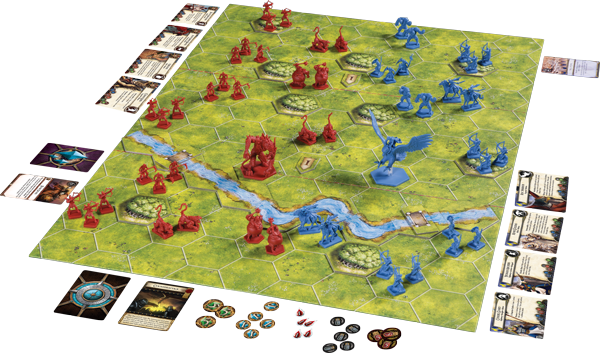
Play Your Hand, Not a Card
Novice players tend to play their best command card every turn, believing that their best option is essentially obvious. This can work fine as a strategy amongst inexperienced players, though the winner is then determined by who draws the best cards. This kind of play rapidly devolves into a death-spiral, with you holding a dead hand consisting of three useless command cards and one likely candidate, hoping to draw an answer to your opponent’s attacks at the end of each turn.
What every successful general needs to do is look beyond single card play and view the hand as a whole. Imagine that your current hand has the only cards you’ll ever get, and consider how they can be used in a chain across several plays, to set up encirclements, make game-changing hammer blows, or divide your opponent’s forces. It’s especially important to think this way during setup when you can shape your starting hand – what do you want your first four turns to look like?
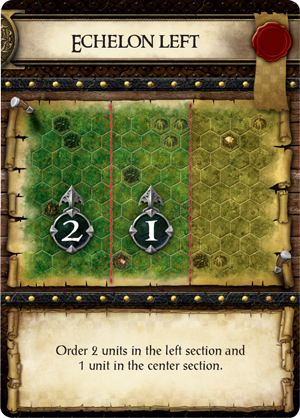
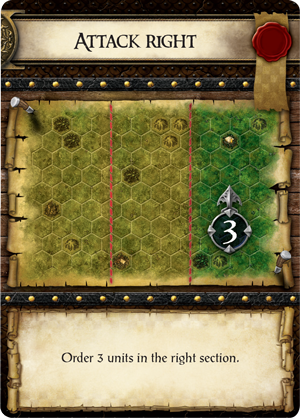
During play, the best players figure out ways to “toss the ball to themselves.” This means ordering a unit to move into position now so that you can pick it up with another card play later, participating in a larger and more meaningful maneuver later. For example, you could play Echelon Left, moving the ordered unit in the center section to cross into the right section, setting it up for Attack Right on your next turn. Your units should be under your control, not Lady Luck’s. By chaining your command cards together and thinking long-term, you’ll end up with a plan that is constantly refreshed, updated, and added to, instead of just another dead hand.
In essence, you want to divine the story your command cards tell of a theoretical four plays, including any possible synergy with your available lore cards. Sequence your plays to apply and sustain pressure against a particular section of the board, breaking your enemy’s army there. The quickest way to wear your opponent’s units down is to hit them repeatedly across consecutive turns. If that’s not possible, play conservatively and marshal your cards until you can unleash such an onslaught.
Know the Decks
In general, I prefer to learn the contents of the factions’ lore decks and the command deck through play – I enjoy the discovery and surprise as the game reveals itself one card at a time. But this kind of attitude is not conducive to competitive play, and more than once I’ve been thoroughly smoked by someone who bothered to thumb through the decks ahead of time. Not knowing lore decks works if you’re going to exclusively play against a single opponent of equal skill, increasing your abilities together, but for all other arrangements you’ll want to sit down and study all the decks: the command deck as well as both lore decks. Learn the contents and distribution so you know what’s possible, what you need to be prepared for, and what you no longer need to worry about once it’s been played.
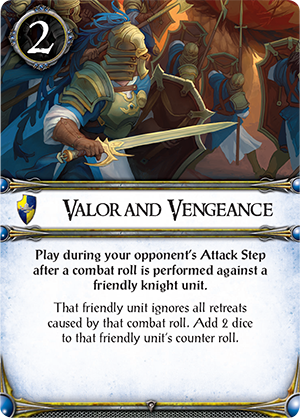
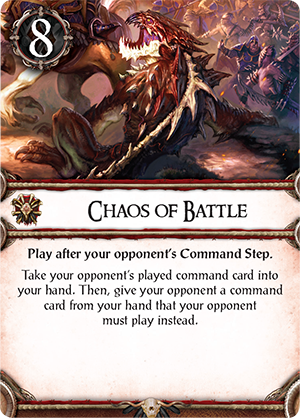
Play the Odds
If you’re just rolling dice in isolation, combat in BattleLore Second Edition can seem random, but there’s actually a science to tipping the odds in your favor. Each combat die has six distinct faces, giving a one in six chance for any specific result. Since non-weak melee units deal damage on two results, they have a one in three chance of scoring a hit per die. With those odds, you may not be rewarded for praying for a particular result, but you have to remember that retreat flags can also be converted into hits if the defending unit can’t retreat. With a bit of clever maneuvering (hitting a unit from opposite sides, or backing it up against impassable terrain or the board edge) a non-weak melee unit suddenly has a 50-50 chance of scoring a hit, and the less reliable one in six of ranged attacks improves to one in three. Obviously, the more combat dice you can pour into that trapped unit in one turn, the better.
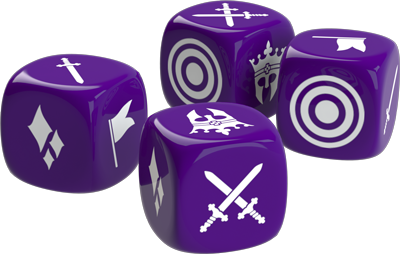
It takes patience to set up a killing blow – playing your hand instead of one card at a time, letting the enemy overextend to put a unit or units at risk, planning three turns ahead to set up a masterful finale instead of thinking one card and one shot at a time. If you’re just hoping for the best and seeing what happens, you’ll do quite randomly against the inexperienced. If want to be competitive, and better than that, to have the depth of this game reveal itself, then you need to mitigate the capriciousness of Lady Luck with a coherent strategy, and some battlefield knowledge.
Thanks, Chris!
Chris was a beta tester for BattleLore Second Edition and enjoys playing and writing about the game. Look for more BattleLore Second Edition guest articles in coming weeks!
…
